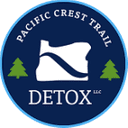Paint, glue, aerosols; all common household products, all common causes of addiction to inhalants. At the risk of sounding like an evening news segment bent on terrifying parents about the latest teen habits, inhalants are a real, potentially addictive product most people have in their homes.
Due to the fact that this addiction centers around common household products, inhalant addiction is most common among teens. Simply put, these chemicals are easily accessible and can cause a high. That said, adults can become addicted to inhalants as well.
In this article, we’ll discuss addiction to inhalants and treatment options for addiction. 1
What are inhalants?
What do we mean when we talk about inhalants? Speaking broadly, inhalants can be grouped into four categories:
- Volatile Solvents: Paint thinners, paint removers, degreasers, gasoline, rubber cement, lighter fluid, glues, nail polish removers, dry-cleaning fluids, correction fluids, felt-tip markers.
- Aerosols: Spray paints, spray deodorant, hair spray, vegetable oil spray, fabric protector spray (if you sense a pattern here, things that come in a spray can).
- Gases: Medical anesthetics like chloroform, halothane, and nitrous oxide (laughing gas).
- Nitrates: Chemical compounds found in clearers, liquid aroma, and room deodorizers.
This is an addiction blog, not a chemistry blog, so we’re not going to go into the details of what differentiates gases from volatile solvents on a chemical level. The point is those are the broad categories of inhalants

Symptoms of inhalant addiction
Inhalant addiction is similar to other addictions in terms of symptoms, with some distinct aspects. Symptoms of addiction include
- Physical Effects: Frequent nosebleeds, irritation around the mouth, and weight loss (as a result of decreased appetite)
- Loss of interest in hobbies: Giving up activities one used to enjoy.
- Declining grades: Performance in school suffers, as the ability to concentrate on schoolwork decreases. For adults, a decline in work productivity or loss of a job can be a symptom.
- Legal troubles: Legal troubles that are caused by use are generally a sign of a problem with a substance
- Use despite adverse effects: Continuing to use the substance even if there have been negative physical and mental effects from use.
- Increased tolerance: Constant use of any substance builds up a tolerance, meaning more and more is needed to attain a high.
- Emotional Changes: Becoming more depressed, having increased anxiety, and being noticeably irritable.
These signs, among others, can point to an addiction to inhalants, which can be deadly. An overdose can cause anything from a loss of consciousness, injuries due to risk-taking behaviors, seizures, and in especially severe cases, SSDS (Sudden Sniffing Death Syndrome).
Long-term overuse of inhalants has the potential to cause brain damage, weight loss, muscle weakness, and heart, liver, lung, and kidney damage. 2
Detox
For chronic inhalant users, detox may be necessary. Fully detoxing may take several weeks, as the chemicals in inhalants accumulate in the fatty tissue of the brain, heart, muscles, and liver. Luckily, most people who use inhalants do not experience severe withdrawal symptoms. 3

Recovery
A 12-step program can provide a good base for recovery. The rooms of a 12-step-based program provide a good support network of people who know exactly what you’re going through. Working with a sponsor can help you acknowledge your powerlessness, work through your resentments, make amends to those you have harmed, and help you lead a normal, productive life.
In some cases, inhalant addiction may require inpatient or outpatient treatment. This can give you a firm footing in recovery and the opportunity to work with mental health professionals. These programs often involve group therapy, 12 step meeting attendance, individual therapy sessions with a counselor, and attainment and work with a sponsor.
Oregon Trail Recovery and our sister companies Pacific Crest Trail Detox and Compassionate Interventions offer full intervention, detoxification, intensive outpatient, and sober living services.
Contact us today to learn more about recovery for you or a loved one.
References:
- The Cleveland Clinic. (2022). Inhalant Abuse: Signs, Symptoms & Treatment (clevelandclinic.org)
- National Institute on Drug Abuse. (2012). What are the other medical consequences of inhalant abuse?
- Jeffery Juergens, Addiction Center (2021) Inhalant Addiction Treatment
